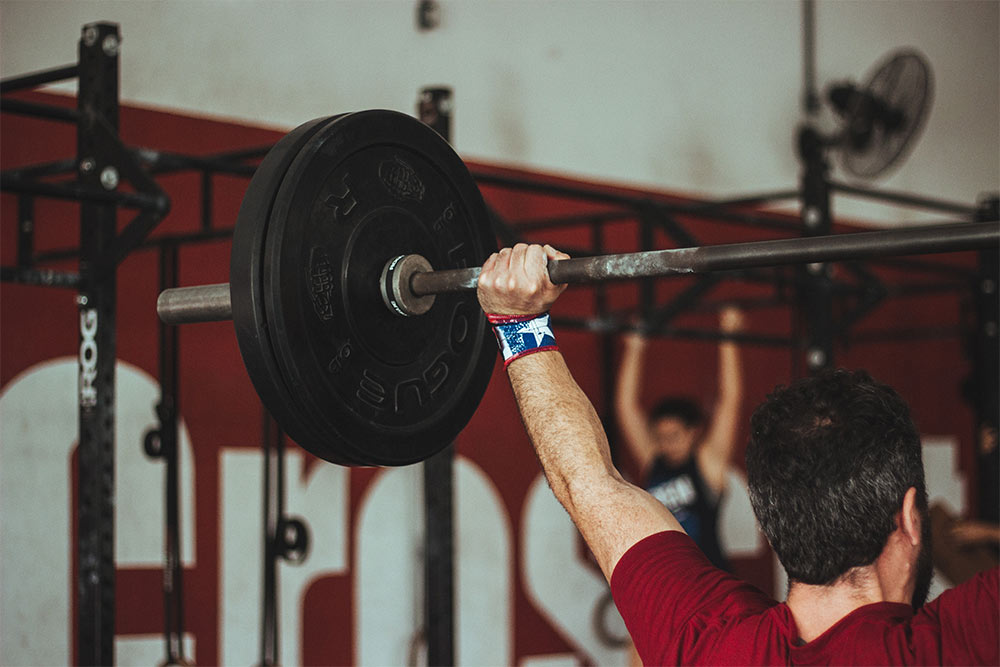Everything You Need to Know About Lifting to Failure

I love that gym culture has become increasingly popular over the last decade. People are willing to train hard for the sake of self-improvement. People are willing to push themselves in the gym.
But with this has come one small negative.
The misconception that if you do not leave the gym in a pool of blood, sweat, and tears, your workout was for naught – which is not the case at all.
Begging the question: do you need to lift to failure?
What is muscle failure?
If we think about it simply, lifting to muscular failure describes training to the point at which you can no longer physically complete a repetition.
Let’s use the bench press as a bit of an example.
An athlete goes into the gym with the intention to bench press 200lbs for 12 reps – but you get 9 reps in and your muscles are on fire.
Despite the pain, you keep pushing.
Your tenth rep is slow. It is agony. The bar feels like it weights a thousand pounds.
Then, on the eleventh rep, things go a little pear-shaped.
Lower the bar to your chest and start pushing as hard as you possibly can. Eyes squeezed shut, muscles screaming, veins bulging, you push.
But the bar does not budge.
You can no longer complete a rep.
Congratulations, you have reached muscle failure.
Muscle failure vs fatigue
Hopefully you can see that muscular failure and muscular fatigue are slightly different.
Muscular failure is the result of muscular fatigue.
Think about the example above.
As you are going through your bench press set, your muscles are fatiguing. With each individual repetition, fatigue accumulates. Eventually it reaches a point at which your muscles can no longer produce the force required to overcome the load.
I.e. muscle failure.
So, if you are wondering how you know if you have worked out to failure, then wonder no more. If you can no longer complete a rep – despite all your best efforts – then you have reached muscular failure.
Is training to failure important?
For the longest time, coaches across the globe swore that training to failure was integral for athletes to maximise muscle strength and muscle growth.
And there was some reason to believe that this was the case.
Training to failure and muscle recruitment
First and foremost, the accumulation of fatigue forces your body to recruit higher threshold muscle fibres. These same muscle fibres are those that produce powerful forces under explosive conditions.
As such, it was hypothesised that training to failure was necessary to make these fibres stronger.
However, recent research has shown that these same fibres are recruited when we choose to use higher loads, irrespective of whether we go to failure or not.
This means that heavier strength training (using loads above 85% 1RM) is enough to maximise muscle fibre recruitment – even without the presence of fatigue.
Training to failure and metabolic stress
The accumulatio of metabolic by products (such as lactate) create a metabolically stressful environment within the muscle tissue. And this metabolic stress is often considered one of the key drivers for muscle growth.
Now, training to failure increases the severity of this environment, which may have implications for muscle growth.
It is not yet clear whether the metabolic stress created by a set completed to absolute muscle failure leads to a significantly greater accumulation of metabolites than a set stopped just short of failure.
Training to failure and mental toughness
And finally, it is thought that training to failure on the occasion may have some positive implications for mental strength.
On the elite end of the spectrum, athletes need to be able to push themselves to their absolute limits on a regular basis. This means having the metal fortitude to work as hard as they possibly can, for as long as they possibly can.
Training to failure teaches them to deal with this fatigue from a mental perspective, therefore making it easier to manage during competition.
Similarly, on the less elite side of the spectrum, training to failure lets you know what your body is truly capable of.
While this may sound a little bit silly, there are thousands of people who train in a gym on a regular basis but rarely break a sweat – not because they don’t want to improve, but because they don’t know how to work hard.
Training to failure will allow them to find their limits and push themselves in the gym.
Related Article: Increase Strength, Increase Lifespan – Powerlifting Could Change Your Life
Is training to failure necessary?
Onto the real question – is training to failure necessary for muscle growth and muscle strength?
The above section outlines some of the potential benefits that may come from training to failure. But does this information hold true? Does it really have an impact?
Training to failure for strength
Interestingly, when it comes to training for strength, there appears to be little benefit of going to failure (Davies, 2015).
In fact, recent has shown that choosing to stay 1-3 repetitions shy of failure every set will result in slightly larger gains in strength than training to failure every single set.
While this seems a little counterintuitive, it makes sense.
When you train to failure, you cause more muscle fatigue. This fatigue then impairs your ability to perform every subsequent set of a given exercise.
Your ability to produce maximal force becomes impaired, and you won’t be able to perform as many repetitions.
And to optimise strength, you need to be able to perform a high volume of repetitions using heavy loads, all while producing maximal amounts force – making training to failure suboptimal.
Training to failure for muscle growth
Similarly, while there are some positives associated with training to failure in terms of metabolic stress, research has shown that training 2-3 reps short of failure every set will cause similar amounts of muscle growth as training to failure every set (Schoenfeld, 2019).
And this is for a very similar reason.
Because training to failure lowers the amount of repetitions you can do for every subsequent set, your total training volume goes down – and training volume is often considered the most important factor for muscle growth.
I have a provided a bit of an example of this in the table below, where you might choose to perform 4 sets of the bench press using a weight that you can lift for a maximum of 10 times. Training to failure will only net you 29 total reps, whereas staying two reps short of failure each set will net you 32.
Obviously, the 32 rep scenario will result in more muscle growth over the long run.
It is important to note that while this holds true when using heavier loads (that automatically recruit all your muscle fibres), it is not the same when using lighter loads and higher repetitions (more than 15, for example).
In this scenario, you need to elicit fatigue to ensure the recruitment of all your muscle fibres – as such, training to failure with light loads will have a slight advantage.
Tips for working out to failure
We now know that training to failure is not essential for muscle strength, but it can have some positive effects for both muscle hypertrophy (AKA muscle growth) and mental toughness.
So how should you do it?
- Use it sparingly: it is well established that it takes longer to recover after training to failure than not training to failure. As a result, if you train to failure all the time, it can negatively impact your subsequent sessions. Consequently, I recommend training to failure for only 1-2 exercises per workout. And rather than training to failure every single set, only do it on the last set of a given exercise.
- Save it for the end of your session: because training to failure causes so much fatigue, it is best saved for your last one or two exercises. This means that it will not impair your ability to complete the rest of your session, while still impacting muscle growth and mental resilience in a positive way.
- Stick to isolation exercises: the fatigue that comes with training to failure can have a negative impact on your technique. This means that it is better used on isolation exercises, in which you are less likely to get injured even if your technique becomes impaired.
The ideal muscle failure workout
With these tips, I wanted to provide an example of how I believe it is best to implement training to failure into your sessions.
This ensures that you will improve strength while still enhancing muscle growth!
Take Home Message
For a long time, it was firmly believed that training to failure was essential for strength and muscle growth.
However, recent research has shown that this is not the case.
In fact, if used to often, it may even be detrimental – which is why you should follow the tips outlined in this article and use it sparingly!
References
Davies, Tim, et al. “Effect of training leading to repetition failure on muscular strength: a systematic review and meta-analysis.” Sports medicine 46.4 (2016): 487-502.
Schoenfeld, Brad Jon, and Jozo Grgic. “Does training to failure maximize muscle hypertrophy?.” Strength & Conditioning Journal 41.5 (2019): 108-113.
You Might Like:














































